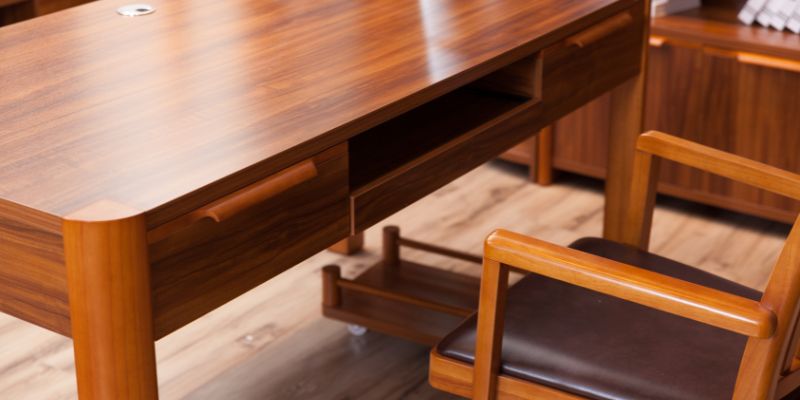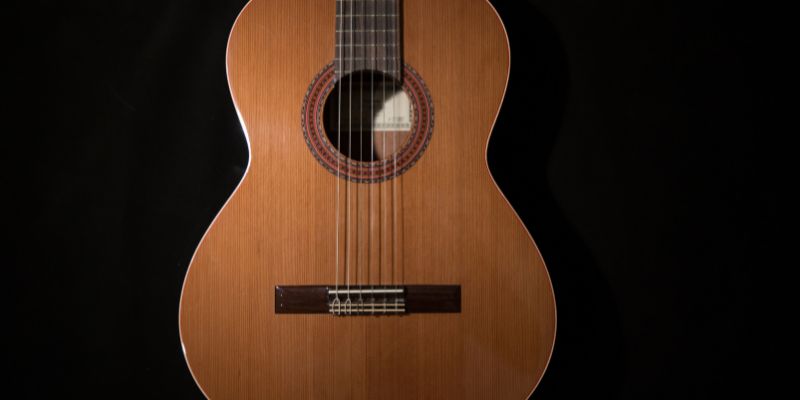Spanish Cedar is a superior wood choice for outdoor projects, while Mahogany is ideal for indoor applications. Spanish Cedar and Mahogany are two popular wood choices in the woodworking industry.
While both offer exceptional qualities, they have distinct differences that make them suitable for specific projects. Spanish Cedar is a hardwood primarily used for outdoor applications due to its natural resistance to rot, decay, and insect infestation. It is known for its durability and ability to withstand harsh weather conditions.
On the other hand, Mahogany is a versatile wood often chosen for indoor furniture and cabinetry. It is prized for its rich color, fine grain, and natural beauty. Additionally, Mahogany offers excellent workability and stability, making it a favorite among craftsmen. Understanding the characteristics of each wood type will help you make an informed decision when selecting the most appropriate material for your project.
Appearance And Physical Properties
When it comes to choosing the right wood for your furniture or woodworking projects, the appearance and physical properties are crucial factors to consider. In this article, we will be comparing the appearance and physical properties of Spanish Cedar and Mahogany, two popular and versatile wood types often used in the industry. Let’s dive in and explore what sets them apart!
Appearance Of Spanish Cedar
Spanish Cedar, also known as Cedrela odorata, is a stunning wood with a distinct reddish-brown color that deepens with age. It boasts a straight and fine grain pattern that adds elegance to any piece. Its texture is typically medium to coarse, with a natural luster that gives it a rich and attractive appearance. Spanish Cedar also exhibits occasional knots and interlocking grain, enhancing its unique character.
One of the most captivating features of Spanish Cedar is its aromatic scent. When freshly cut, it releases a pleasant fragrance that repels insects, making it an excellent choice for outdoor furniture or humid environments. Additionally, it has a highly fire-resistant nature, making it a safe option for certain applications.

Appearance Of Mahogany
Mahogany, scientifically known as Swietenia macrophylla, is revered for its timeless beauty and versatility. It is famous for its stunning reddish-brown hue, often accented by dark streaks that add depth and character to the wood. The grain of Mahogany varies from straight to interlocked, lending an appealing aesthetic touch to the furniture and crafts made from it.
With its medium to coarse texture, Mahogany showcases an enticing natural shimmer when properly finished. This wood species has a mildly interesting scent, which, while not as pronounced as Spanish Cedar, still adds a pleasant touch to the atmosphere.
Comparison Of Physical Properties
Let’s take a closer look at the physical properties of Spanish Cedar versus Mahogany:
| Spanish Cedar | Mahogany | |
|---|---|---|
| Density | Light to medium-density | Medium to high-density |
| Hardness | Soft to moderately hard | Moderately hard |
| Stability | Relatively stable | Moderately stable |
| Workability | Easy to work with | Easy to work with |
| Durability | Good resistance to decay and insects | High durability with natural resistance to rot and insects |
As shown in the table, Spanish Cedar is lighter and less dense than Mahogany. It possesses a softer to moderately hard nature, making it easier to work with, especially for intricate wood carving or turning projects. Moreover, it displays a greater resistance to decay and insects compared to Mahogany.
On the other hand, Mahogany offers a higher density and hardness, resulting in furniture and structures that are incredibly sturdy and resilient. It also exhibits excellent durability, natural resistance to rot, and insect attacks from termites or beetles.
Understanding the appearance and physical properties of Spanish Cedar and Mahogany gives you valuable insight into choosing the wood that best aligns with your project requirements. Both woods possess their unique charm, allowing you to create stunning works of art that stand the test of time.
Uses And Applications
Spanish Cedar and Mahogany are both widely used in various applications due to their excellent qualities. Spanish Cedar is known for its natural resistance to insects, making it a popular choice for humidors and outdoor projects. On the other hand, Mahogany is prized for its durability and beautiful grain, often found in furniture, cabinets, and musical instruments.
Wood is not just a building material; it’s an expression of craftsmanship and elegance. When it comes to selecting the right wood for your projects, two popular options stand out: Spanish Cedar and Mahogany. Each has its unique qualities and advantages. In this section, we will explore the common uses of Spanish Cedar and Mahogany, as well as compare their applications in different projects.
Common Uses Of Spanish Cedar
Spanish Cedar, scientifically known as Cedrela odorata, is cherished by woodworkers for its exceptional properties. Its distinct reddish-brown hue, straight grain, and fine texture make it a preferred choice for various applications.
Here are some common uses of Spanish Cedar:
- Exterior millwork: Spanish Cedar’s natural resistance to decay and insects makes it ideal for outdoor applications such as siding, window frames, doors, and shutters.
- Furniture: Its attractive appearance and workability make Spanish Cedar highly sought-after for crafting furniture pieces like cabinets, tables, chairs, and chests.
- Cigar humidors: Spanish Cedar’s aroma, low resin content, and ability to absorb moisture without warping make it a favored material for creating cigar humidors.
- Interior finishings: Spanish Cedar’s pleasing fragrance and resistance to mold and mildew make it a suitable choice for interior finishings like paneling, moldings, and trim work.
Common Uses Of Mahogany
Mahogany, scientifically known as Swietenia, is renowned for its rich, reddish-brown color and exceptional durability. Its strength, stability, and beauty have made it a classic wood choice for centuries.
Here are some common uses of Mahogany:
- Furniture: Mahogany’s natural beauty and resistance to warping, swelling, and shrinking have made it a beloved material for crafting high-quality furniture, including tables, chairs, cabinets, and bed frames.
- Veneer: Mahogany’s attractive grain patterns make it a popular choice for creating veneers used in cabinetry, musical instruments, and decorative applications.
- Boatbuilding: Due to its natural resistance to rot and its impressive strength-to-weight ratio, Mahogany is often utilized in boatbuilding, specifically for decks, hulls, and interior finishing.
- Flooring: Mahogany’s durability and warm, inviting color make it well-suited for flooring applications, adding elegance and sophistication to any space.
Comparison Of Applications In Different Projects
While both Spanish Cedar and Mahogany have their own unique charm and qualities, their applications may overlap in certain projects. Let’s compare their applications across different woodworking projects:
| Spanish Cedar | Mahogany | |
|---|---|---|
| Exterior Millwork | ✔️ | ✔️ |
| Furniture | ✔️ | ✔️ |
| Cigar humidors | ✔️ | ✖️ |
| Interior Finishings | ✔️ | ✖️ |
| Veneer | ✖️ | ✔️ |
| Boatbuilding | ✖️ | ✔️ |
| Flooring | ✖️ | ✔️ |
As shown in the comparison table, Spanish Cedar and Mahogany both find their applications in exterior millwork and furniture-making. However, Spanish Cedar is preferred for cigar humidors and interior finishings, while Mahogany excels in veneer production, boatbuilding, and flooring.
In conclusion, the choice between Spanish Cedar and Mahogany depends on the specific project requirements, desired aesthetics, and performance characteristics needed. Both woods offer exceptional quality and versatility, allowing artisans and craftsmen to bring their visions to life with grace and durability.

Frequently Asked Questions Of Spanish Cedar Vs Mahogany
What Is Spanish Cedar And Mahogany Wood Used For?
Spanish Cedar is commonly used for manufacturing cabinets, humidors, and outdoor furniture. Mahogany wood is commonly used for furniture, boat building, and musical instruments.
What Are The Differences Between Spanish Cedar And Mahogany?
Spanish Cedar has a reddish-brown color, while Mahogany has a deeper reddish-brown hue. Spanish Cedar has a more pronounced aroma, while Mahogany has a subtle scent. Spanish Cedar is lighter in weight, while Mahogany is denser and heavier.
Which Wood Is More Durable, Spanish Cedar Or Mahogany?
Both Spanish Cedar and Mahogany are known for their durability. However, Mahogany is generally considered to be more durable and resistant to rot, decay, and pests.
Can Spanish Cedar And Mahogany Be Used For Outdoor Projects?
Yes, both Spanish Cedar and Mahogany can be used for outdoor projects. However, Spanish Cedar requires regular maintenance and protective finishes to preserve its appearance, while Mahogany is naturally more resistant to weathering and can be left untreated.
Conclusion
To summarize, when deciding between Spanish Cedar and Mahogany for your woodworking projects, it’s important to consider their respective properties and advantages. Spanish Cedar’s resistance to rot and insects makes it an excellent choice for outdoor applications, while Mahogany’s durability and rich color make it ideal for furniture and interior projects.
Ultimately, the decision will depend on your specific needs and preferences. Rio Grande Woods offers a wide selection of both Spanish Cedar and Mahogany to meet all your woodworking needs.


